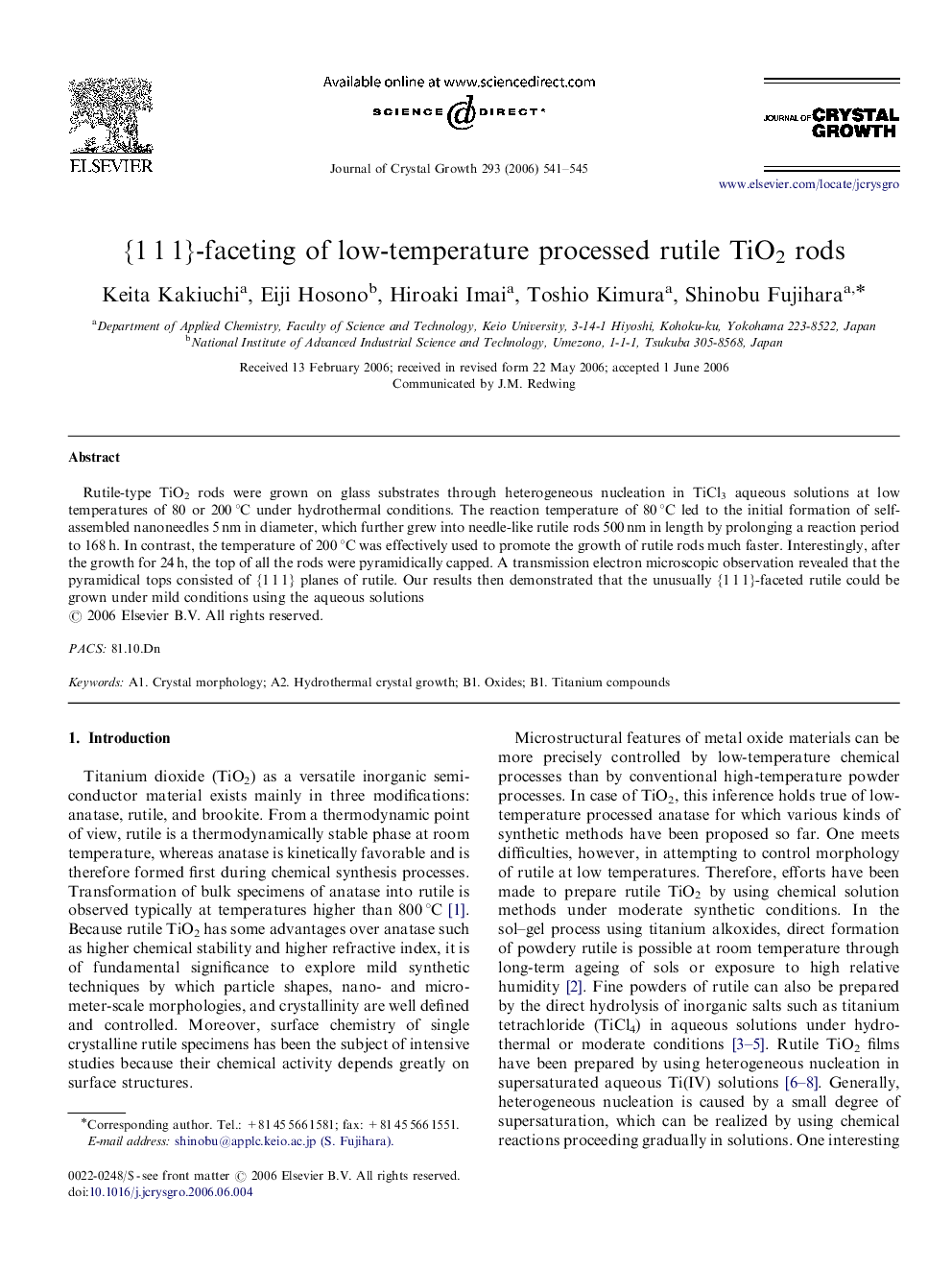| Article ID | Journal | Published Year | Pages | File Type |
|---|---|---|---|---|
| 1797298 | Journal of Crystal Growth | 2006 | 5 Pages |
Rutile-type TiO2 rods were grown on glass substrates through heterogeneous nucleation in TiCl3 aqueous solutions at low temperatures of 80 or 200 °C under hydrothermal conditions. The reaction temperature of 80 °C led to the initial formation of self-assembled nanoneedles 5 nm in diameter, which further grew into needle-like rutile rods 500 nm in length by prolonging a reaction period to 168 h. In contrast, the temperature of 200 °C was effectively used to promote the growth of rutile rods much faster. Interestingly, after the growth for 24 h, the top of all the rods were pyramidically capped. A transmission electron microscopic observation revealed that the pyramidical tops consisted of {1 1 1} planes of rutile. Our results then demonstrated that the unusually {1 1 1}-faceted rutile could be grown under mild conditions using the aqueous solutions
